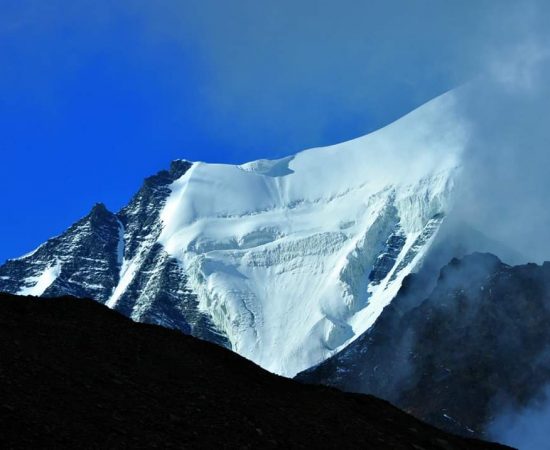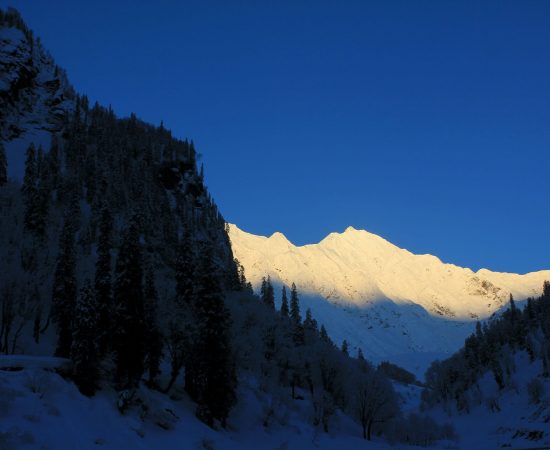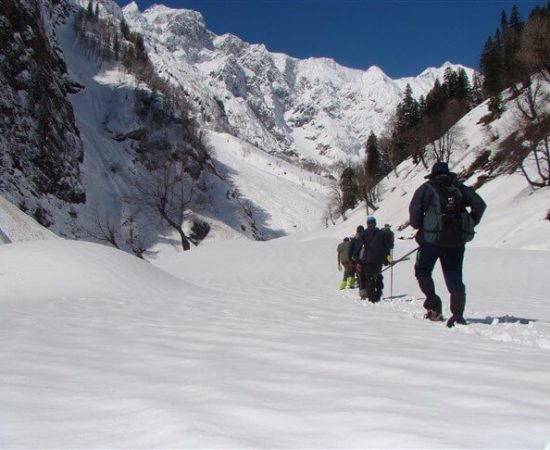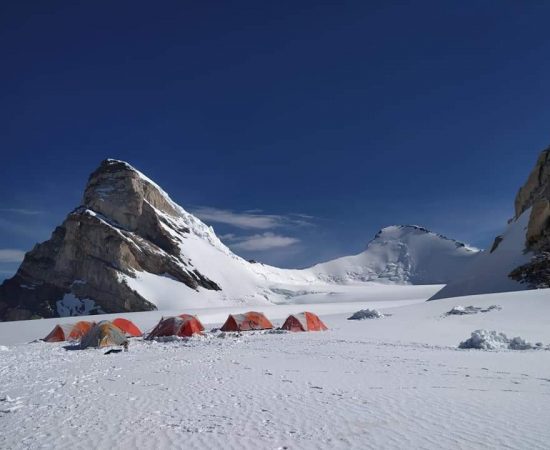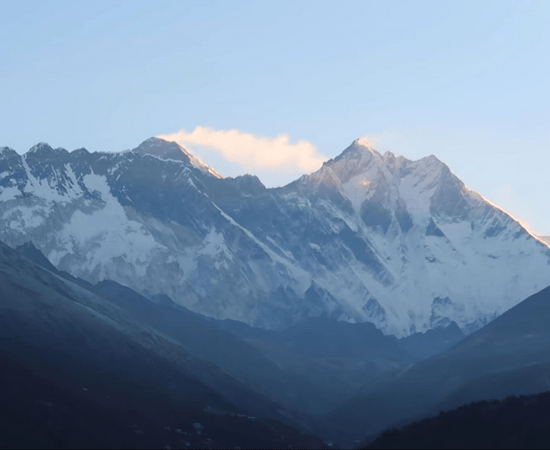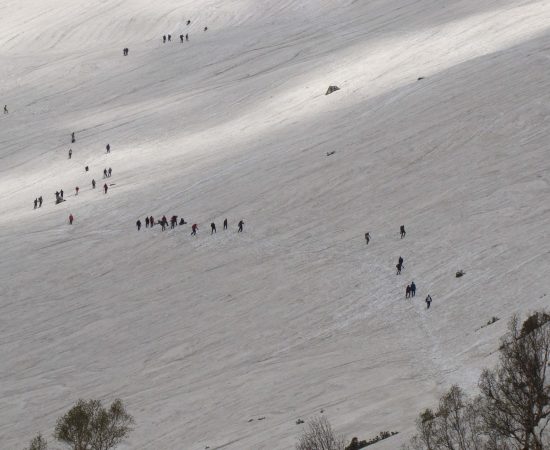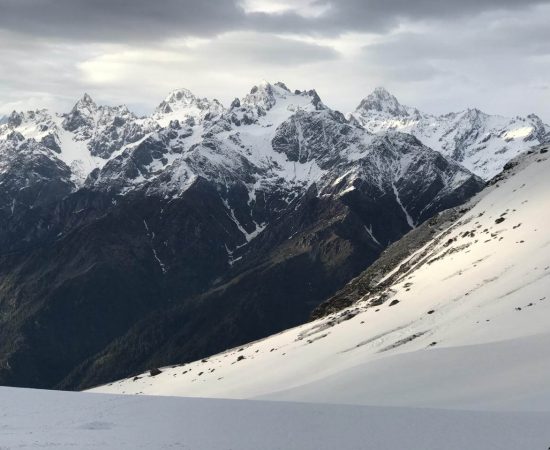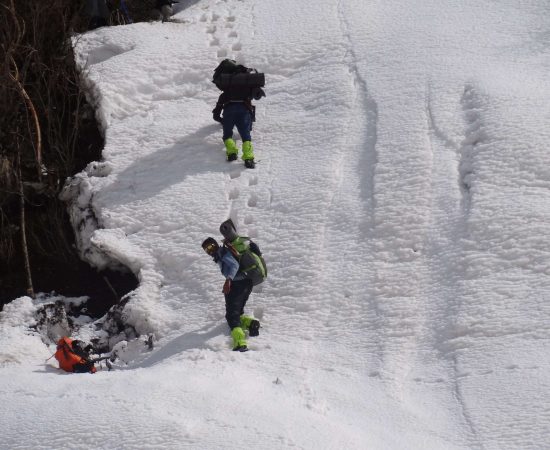Mentok Kangri 2 Expedition
Leh, Ladakh
Rated 4.9/5.0 on TripAdvisor. 550 Reviews


Key Highlights
- Altitude : 6262m
- Time : 14 Days - 13 Nights
- Region: Leh, Ladakh
- Best Time: May-October
- Grade: Moderate
Overview
Mentok Kangri 2 Expedition
If you're interested in reaching respectable heights—the kind of altitude that really counts at this point in the climbing process—then here is your opportunity to scale the "Mentok Kangri" with little difficulty. It's a straightforward peak that yet needs sufficient physical power and previous hiking expertise above 5000m. It could be the perfect primer for people who are eager to experience life at a relatively low pressure, high altitude. The Mentok Kangri is located in the Changthang district of Ladakh, India. Mentok I (6250 m), Mentok II (6210 m), and Mentok III (6150 m) are its three successive summits. Mentok means "flower" in Tibetan, and Kangri means "Ridge" or "Peak," hence the mountain is also known as the "flower mountain" in Tibetan. You can climb any of the three peaks, or only the one you choose, if you're very determined. Views of Changpa herders' isolated highland communities, as well as Kiang, Blue Sheep, Tibetan Antelope, Foxes, Wolves, Hares, Pikas, and the elusive Snow Leopard, may be seen from afar atop the Mentok peaks, which rise above the Changthang plateau just above the western slope of Tso Moriri. Along the way, you'll see wide valleys, tight gorges, winding passes, still lakes, and eventually, the desolate countryside. At some point in the course of this journey, you will unavoidably come face to face with the Changpas and their solitary way of life, as well as the difficulties they face in the vast and harsh areas they call home. It is Changpa's conviction that one should honour one's own country and continue to enjoy life no matter how difficult the circumstances may be.
After getting our bearings in Leh, we'll hit the road for the short journey from Rumste, a hamlet just below the Tang lang La, to Karzok, a town on the shores of Tso-Moriri Lake. To prepare for the forthcoming climbing days, we will establish base camp at around 5250m above the lake. The last stretch of the ascent to the peak is steep, although technical equipment is unnecessary; instead, ropes may be attached on icy inclines for added safety. Only when one gains altitude does it become necessary to maintain a constant rate of ascent. One day we shall reach the peak, and when that time comes, we will launch an early morning assault. When we finally reach the peak of Mentok Kangri I, we'll be rewarded with breathtaking vistas of TsoMoriri and Tsokar Lake from the expansive Changthang Plateau. In addition, if you gaze out at the surrounding mountains, you'll see the towering peaks of Mentok, Chamser, and Lungser Kangri, all of which are above 6600 metres high.
Though it isn't a true challenging summit, Mentok Kangri nevertheless needs careful planning and climbing expertise to scale. It's not like less technical challenges would make climbing easier if the ascent in height made things more difficult. As a result, you'll need plenty of stamina and a clear head to make it to the top of that mountain.
Cost Per Person
Key Highlights
- Altitude : 6262m
- Time : 14 Days - 13 Nights
- Region: Leh, Ladakh
- Best Time: May-October
- Grade: Moderate
Complete
Itinerary of Expedition
The first thing that you need to do is reach Leh which is going to be the starting point of our trek. Both roads and planes can get you to Leh in their own manner, but trains don't reach till the high altitude desert. From India's main cities, you may take your pick of frequent airlines and travel to the location. Leh's Kushok Bakula Rimpochee Airport is India's highest airport. Recovering from tiredness is a priority after you reach Leh. Make sure you get enough rest after you reach Leh so that you can go on with your expedition in a good frame of mind.
Due to the high elevations of Ladakh, visitors are at risk of altitude sickness the moment they arrive. Ladakh is located at a height of around 3,500 metres (about 11,500 feet) above sea level. Thus, altitude sickness is common over 8,000 feet. So, it is recommended that you spend the remainder of the day relaxing and acclimating to the high altitude in Leh. You are free to travel in and around Leh today. In addition to seeing the area, today will be spent acclimating to the high altitude in preparation for tomorrow. Spend the day exploring one of Leh's many renowned monasteries, such as Spituk Gompa, Magnetic Hill. In addition to the Indus River, you can also visit the confluence of the two great rivers of the Ladakh region which are Zanskar and Indus. Please go ahead and look around as much as you like. After a day of seeing the area's rich cultural heritage and sampling its delicious food, we'll turn in for the night. The trip to experience one of the longest hikes in the Himalaya area will begin the following day.
The Mentok Kangri Expedition officially begins today. As soon as we are done with having our breakfast in Leh, we head on to the road towards Rumtse. It's a good idea to bring extra water with you since it might take a long time to reach a watering hole along the path. On the way to Rumtse, you'll pass through a number of breathtaking sceneries. From Rumtse, we'll set off on foot to make our way to Kyamar through a gentle, gradually ascending track. Since much of today's path is uphill, we'll go at a steady pace so that we don’t exert our bodies in that altitude. After today's 4-hour hike from Rumtse to Kyamar, we'll be at an altitude of 15,000 feet. Camping is planned for the night. We'll have some great times together, have a hearty meal, and then hit the hay in our tents.
After a hearty breakfast at the campground, we pack up and start hiking to Tisaling. As we make our way to the top of Kyamar La today, we'll get to take in breathtaking panoramas of the city below. Snow-covered trees and other exotic sceneries offer a peaceful high-altitude existence. This is an unforgettable experience that you will experience no matter how many times you come to the Himalayas. Towering peaks create a landscape that seems like a little bit of paradise on earth. We will reach Tisaling, at an altitude of 16,000 feet, after several hours of strenuous hiking.
It has been decided to arrange for a night's stay in Kyamar. It is possible to go for an evening stroll that will help you adjust to the altitude. We'll go back to the campground for supper after our stroll. The fourth day of the trek will conclude with the beginning of a restful night's sleep before a new day begins.
Leaving Tisaling, we must go to Pangunago, which is at an elevation of 4,800 metres (or 15,748 feet). The trek through the rugged and tough landscape of Ladakh truly brings about a certain thrill and awe as the unique hue of the valley is simply scintillating. We will take rest stops in between to rest, have our packed lunch and admire the magnificent backdrop of the area. The highlight of today’s trek will be the climb to Shibuk La. Gaining altitude and then descending down to a lower altitude at Pangunago helps acclimatize our bodies better, which will help us make the climb even better. We'll be setting up our third camp here, which will get us closer to the peak. Camping is planned for the night. We'll have some great times together, have a hearty meal, and then hit the hay in our tents.
We'll leave Pangunagu and proceed with our journey towards Nuruchan Base Camp. After 5 hours of nonstop hiking today, we will reach an altitude of 5,190 meters. Enroute we will cross the magical Tso Kar with its crystal water and hidden away in the valleys of Ladakh. We'll set our camp in Nuruchan base camp, nestled among the Ladakhi Himalayas. It's hard to find a better camping spot anywhere in the Himalayas than this one. Taking in the tranquility of this location will leave you in awe of the natural wonders that surround you. The mellow roar of the river's water will soothe your soul like music.
Our trek today is going to be a short and easy one, as tomorrow’s trek is going to be tough and challenging. We will reach our campsite just in time for lunch. Immediately after lunch, we'll begin erecting our tents. The evening of the first day will be spent briefing climbers on the gear they'll need and answering any questions they may have about the impending attempt to conquer this massive peak.
On day 8, you'll make your way from the Rajungkaru campsite to the GyamarBarma Base Camp by crossing the Kyamayuri La. About 17,388 feet above sea level is where you'll be making your crossing and reaching the base camp. The whole day's trek should take you around 5 hours to accomplish. A hearty breakfast will set us up for a day of hiking on the GyamarBarma Trail. Most of the landscape consists of stony trails. The climb to the peak of GyamarBarma is a strenuous one. Not many places along the path provide access to water, so make sure to bring along enough water to last the duration of the hike. If you follow the trail's clear markings, you won't get lost. All along the walk, you may stop and take in the breathtaking scenery of the surrounding trees and mountains. The plan is to set up our tents and have supper beneath the stars. This day will finish when everyone retires to their tents for the night.
After a hearty breakfast at the GyamarBarma camp site, we'll get an early start on the day. Going through the Yalung Nyau La adds a little more strain to our journey to Korzok. Getting to the Korzok Campsite will take around seven hours. Carrying at least two litres of water is recommended. You may refill your water supply at one of many spots along the route you'll be taking today.
Take it easy and go around the campground today beside the magnificent Tso Moriri. You'll have plenty of time to relax and recharge today in preparation for tomorrow's difficult climb. There will be tent camping for the night.
Today’s trek will take you from Korzok to the foot of Mentok Kangri. Approximately 17,717 feet above sea level is where you'll find Stok Kangri Base Camp. The distance from Korzok to Mentok Kangri Base is rather short for a trek. Our last overnight stop before ascending to the peak of Mentok Kangri is here at this beautiful campground.
After getting some rest, you should go for a brief acclimatisation walk to help your body adjust to the altitude. The trek will not only reward you with breathtaking scenery, but will also help you adjust to the higher altitude and better prepare you for what comes ahead. In the following days, your body will be more prepared for the high altitude, cold, and thin air by virtue of these little strolls. In the region beyond Korzok, there is a sudden shift in the average temperature. Around here, the weather is constantly shifting, and the density of oxygen is estimated to be ⅓ of the normal in plain lands. Altitude sickness prevents most people from continuing on to Mentok Kangri's peak at this point. Before making one last effort to scale the towering Mentok Kangri mountain, it is essential to rest for an extended period of time to acclimatise to the climate. In order to have a decent night's sleep, you need get enough of rest and eat a healthy meal.
Finally, we must be prepared for the most anticipated and critical day of the whole walk, which also happens to be the most arduous day of the entire expedition. So, be ready for a thrilling day.
As we set out on our journey, we'll have to make our way through a snowy route with some very high inclines. It's a long day of hiking, but the thrill of reaching the summit of the peak, more than makes up for the fatigue. When moraine and scree fill the trail, the descent takes a notoriously perilous turn. Gaining confidence in one's footing is essential here. We'll spend some quality time at the peak, and then go back to base camp.
We keep a day’s time as a buffer in case the summit attempt is delayed due to bad weather conditions.
We will be retracing our steps back from the base camp. As you make way for Korzok, you'll be treated to a breathtaking view of snow-capped mountain ranges. We'll be sleeping in tents once again tonight. In a nutshell, tonight is the final one of the journey. When the weather is good, we'll have a bonfire and serve dinner. We'll celebrate our time together on this magical journey with songs and dances.
On the last day of your trip, we'll leave Korzok and go back to Leh by car. You feel the thrill of success the whole time. You should plan to return to your hotel in Leh before nightfall. Tomorrow morning, our trip will conclude, you have the option of leaving from Leh or spending the day catching up on whatever sightseeing you missed on the acclimatisation day.
Enquiry For Group Bookings
Guidelines
➽ Preparation for Expedition
As you well know, the great Himalayan expedition is one that requires careful preparation, a strategy that allows for enough flexibility to adapt to whatever challenges may arise.
Therefore, here are some things to consider before setting out on your Mentok Kangri Expedition:
⦿ Physically – You should start working out at least a month before signing up for a program if you want to be physically prepared for the rigours of a journey. Strengthen your legs by jogging and working out regularly to increase your stamina. To better acclimatise to the environment and increase your resilience on the walk, you should give up smoking and undertake breathing exercises twice a day. Engage in vigorous physical activity, such as playing sports, doing Yoga, or running.
⦿ Mentally –
Getting in shape physically is essential, but mental preparation is just as crucial for a successful walk. Take time to enjoy your regular activities, maintain a healthy diet and sleep schedule, and unwind before embarking on a hike. Predictions regarding the journey should not cause mental worry. Spend time with your closest pals to recharge your batteries and renew your spirit. Pre-trek preconceptions are unwarranted since the first contact with the other trekkers is certain to be a source of inspiration and energy. Conditions during the walk will contribute to the increase in mental readiness. The mental repercussions of physical disadvantages will not be ignored. So, when you hike, pay attention to different regions of your body and purposefully relax them. If you want to enjoy your hike, you should learn to loosen up a little, particularly in the hips. Think about your descent as a simple dance, and enjoy the natural rhythms that the path and your body can discover together gradually, whether you're on a flowing downhill route or a frightening slope. Try out a few new walking techniques to add some fun to your commute without worrying about getting somewhere in particular. Maintaining mental fitness mostly requires a willingness to relax and take in the journey, rather than subjecting oneself to undue stress.
Guidelines
➽ Things to Carry
- Good Trekking Boots: You need sturdy trekking boots with supportive high ankles. Don't bring your running shoes. U can carry extra floaters/flip flops also.
- Wear warm clothing, such three-layer coats, fleece upper, hollow fill or down-filled jackets. Carry full-sleeved T-shirt. Carry cotton hiking trek pants and warm pant for your lower body. Never bring shorts or jeans on a hike.
- Take top and bottom thermals with you.
- Quick dry towel with light weight and Personal toiletries. Suns cream lotion, sanitizer, tooth brush ad toothpaste, lip balm and antibacterial powder.
- Socks: Bring two pairs of regular socks and two pair of wool socks for wearing at night.
- A head torch is required.
- Sunglasses/ Goggle: UV-protected sunglasses are necessary to protect against sunlight and Snow Mountain.
- There should also be a woolen cap / balaclava, cap, neck gaiter cum face mask and warm fleece and waterproof summit gloves since it will be chilly. Keep waterproof gloves on hand since they become wet in the snow.
- Everyone taking part in the activity should have their own lunchbox, spoon, mug and water bottle/ hydration pack of 2 ltr.
- Raincoats/ponchos: Since snowfall and rain are frequent at high elevations, it is important to have one on hand so as to avoid getting wet.
- Trekking bag of 75 ltr with rain cover.
- Walking stick.
- Personal first aid box. Emergency ration, energy bars, dry fruit, electoral/Ors
- Personal technical gears list of mountaineering (on rent basis available)
- Climbing boot, Crampon, Sleeping bag (optional), Ice axe, seat harness, Rope and tape sling, helmet, Summit gloves, Gaiters, Carabineers 2 no (screw), figure of eight/descendor, Zumar (Ascendor),
- Required Documents:
a) Registration Form
b) Medical Certificate (signed by a licensed MBBS physician)
c) NOC form (completed by the trekker)
d) 2 passport-size photos
e) ID Proof photo (not PAN)
f) Basic Mountaineering Course certificate.
g) Insurance upto 5 lac..
Guidelines
➽ How to Reach
The best mode of transportation is airplanes:
The only way to get to Ladakh is by flight after the roads to the high passes are blocked for the winter season due to snow. The Manali-Leh and Srinagar-Leh roads are often shut by October-November and November-December, respectively. Throughout the winter, a number of airlines provide frequent flights to Leh. The major goal is Delhi. From Delhi to Leh, there is one flight every day. All three airlines provide flights between New Delhi and Leh: Jet Airways, Air India, and Go Air.
Because rates have a tendency to increase after a given length of time, reservations should be made well in advance.
➽ Trip Cost Includes
- Mountaineering (Instructor/guide) services provided by a highly trained, professional, and qualified Himalayan Adventure Trips staff.
- Certified local guide with extensive familiarity of the area.
- Climbing provides only vegetarian food (breakfast, lunch, and dinner).
- Staff include chefs, cooks, and helpers.
- High Altitude Force, Low Altitude Force, Porters, Mules for Common Equipment (Rations, Tents, Utensils, Central Climbing Equipment, etc.)
- Tents (to be shared), sleeping bags, air mattresses, and air pads are included. Inner
- We offer twin-share accommodations in dome, alpine, and high-altitude tents on all of our treks and expeditions. All necessary camping equipment, including air mattresses, a shelter for cooking and eating, a table and chairs, a stool, and more, would be supplied.
- Someone who can carry heavy items, set up high camps, repair ropes, etc. at high altitudes.
- Assistance from Guide All the Way to the Top
- High-altitude butane gas cooker
- The only meal offered at the hotel will be breakfast. All meals while on the walk will be supplied for you. Indian, Chinese, and Continental cuisines, all freshly cooked, will be on the menu.
- Tin-packaged food is what we'll eat at high altitude.
- A standard first aid kit with oxygen masks for the patient.
- Camping fees, wildlife fees, and forest permits.
- Taxes imposed by the state.
➽ Trip cost Excludes
- Climbers may hire individual porters to carry their gear.
- Airport transportation costs
- Expenses for carrying still/video cameras etc.
- Irregular/Personal costs, such as laundry, phone calls, and gratuities.
- Climbing equipment such as ropes, pitons, snow bars, crabs, etc.
- Your own personal mountaineering equipment and clothes, as well as any specialised foods you may need
- Inner Line Permit.
- Health coverage or the price of a rescue mission
- Expenditures of a more personal character (such as booze, soda, bottled water, mineral water, canned or bottled drinks, candy, canned or packaged dried fruits, etc.)
- Provisions/food to or from the starting point of the trek.
- Any expenses that are incurred as a result of natural disasters, human error, or other unforeseeable occurrences.
- Protect your trip with a travel insurance policy.
- Authorization, licensing, and enlistment with the IMF.
- Payment for Liaison Officer (included for foreign expedition only)
- GST of 5%.
Guidelines
➽ Special Casual Leaves
Government employee can avail the benefit of special casual leave when u join us for a trekking expedition. As per the rule of the pay commission, special casual leave can be availed for up to 30 days in a calendar years for trekking and mountaineering expeditions through a register organization. Himalayan adventure trips are a register adventure tour operator register with Indian mountaineering foundation and Himachal Pradesh tourism. Candidates have to apply for leave at least 30 days before the trek/expedition start.
Testimonials
➽ Provided By The Customers
Everything about our visit to Prashar lake was better than we could have imagined. From our initial contact with Himalayan Adventure Trips, we felt their genuine interest in learning about our group's goals and expectations, and our travels with them reinforced at every turn that they not only understood our requirements but also have the acute skill and expertise to achieve them. Having already had such a wonderful experience with this firm, I will be promoting a trek to Prashar lake to all my friends who share my passion for hiking and will specifically recommend that they work with this outfit. Absolutely fantastic; I have nothing but praise for it.
How useful was this post?
Click on a star to rate it!
Average rating 0 / 5. Vote count: 0
No votes so far! Be the first to rate this post.

